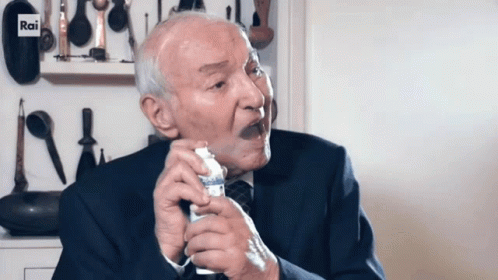Andrew Cote
@Andercot
In 2 days there are have been 4 studies that help explain LK-99’s potential superconducting abilities. These simulations converge on key properties that suggest a new class of SC materials, and help explain quirks of TK-99 we’ve seen so far. Here is the easy-to-digest summary so far: (Reminder: still no experimental replication yet!!) All studies converged on the fact that LK-99 has interesting electronic properties, formed by these ‘flat energy bands’ that can enable superconductivity through several different mechanisms. - This effect relies on copper replacing lead atoms in the crystal, but it has to replace very specific lead atoms for the bands to appear, meaning it may be hard to synthesize with high purity (paper 1) - The conduction pathways in the material may be one-dimensional, meaning they aren’t equal in all directions, and this could be why it doesn’t act as a perfect magnetic levitator but rather a semi-levitator. Also, other metals like gold could make LK-99 perform even better (paper 2) - TK-99 appears to be much more robust to disorder, or randomness in the crystal, while retaining its superconducting properties. And, it appears the overlap of copper and oxygen electron orbitals might explain why this occurs at ambient pressures (paper 3) - The most dramatic result of all is by the most distinguished author: the appearance of diamagnetism without superconductivity seems unlikely (paper 4). Here is the technical deep-dive to back it up: Note: I include highest h-indexes of authors, which is like a ‘science high score’ h=20: ‘successful scientist’, e.g. full professor h=40: ‘outstanding scientist’, e.g. fellowship in APS h=60: ‘truly exceptional scientist’, e.g. national academy 1st Paper - Lawrence Berkeley National Lab Sinead Griffith (h-index 20) https://arxiv.org/abs/2307.16892
@LBNLresearch
scientist
@sineatrix
published the first simulation study on LK-99. Her study supported the original Korean team’s (LKK) proposed mechanism whereby copper atoms replace lead atoms in a crystal structure, which introduces a twist or strain on the crystal. LKK measured a 0.5% volume contraction from this strain, which
@sineatrix
's simulation corroborated, but more interestingly this change in shape creates an interesting change in the available places electrons can fit into the material. These are known as ‘energy bands’ and normally are quite jagged, going up and down below the ‘sea level’ of energy like a mountain range. However, when these energy bands remain quite flat and stay close to sea level, aka ‘fermi energy’, it is thought to enable interesting properties like superconductivity, insulation, etc, and more. Notably these energy bands only form when one particular location receives the copper replacement atom, and it is the least-likely location. This suggests synthesizing the material may be difficult, with low-efficiency yield or purity.
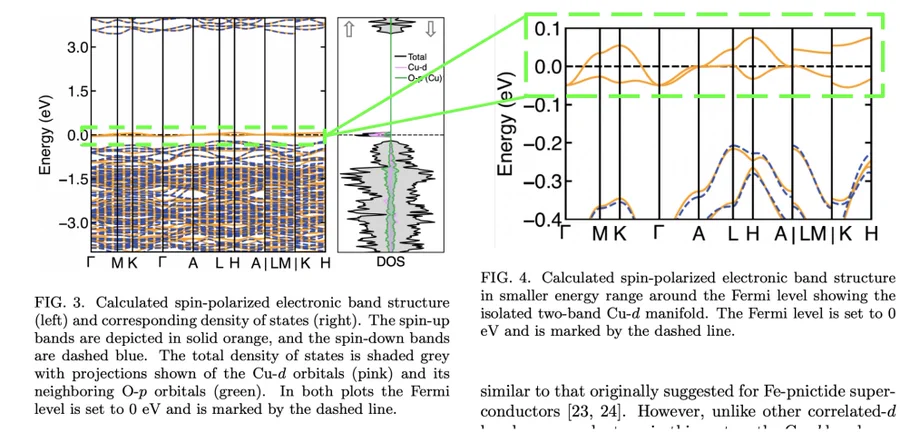
2nd Paper - Shenyang National Laboratory https://arxiv.org/abs/2307.16040 Lai, Li, et al, and Xing-Qiu Chen (h-index: 47) These authors find similar results to
@sineatrix
, showing a volume contraction with lead-apatite has copper introduced, and which produces the signature ‘flat energy bands’ near the fermi level which are thought to make possible superconducting effects. They note that the available conduction pathways through the material seem one dimensional, meaning they do not extend in all directions equally. This might explain an imperfect Meissner effect where the material does not levitate perfectly, but only partially (my interpretation). Most interestingly, they try simulating similarly-sized atoms like silver and gold in replacement of copper atoms, and find that these maintain flat energy bands at the fermi surface. Other elements besides copper may improve the performance of LK-99-like materials.
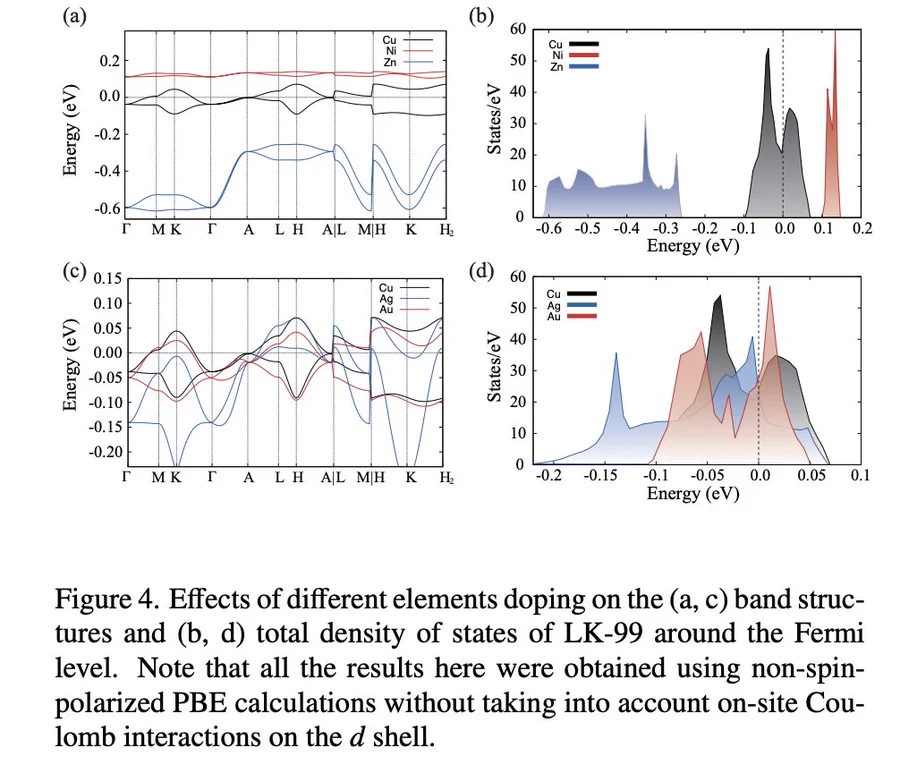
3rd Paper - University of Colorado, Boulderhttps://arxiv.org/abs/2308.00698 Kurleto et al, Daniel S Dessau (h-index: 49) Also finds the same flat energy band structure at the fermi surface. More interesting, these authors simulate the effects of disorder being introduced to the crystal lattice, and see an interesting result: energy bands in TK-99 remain flat even when slightly disordered, i.e. not perfectly ‘ideal crystal’. They suggest this could help explain how it retains superconductivity at such high temperatures. Also, they put forward an interpretation of the superconductivity as reliant on overlapping wave functions, or distributions, of the electron energy levels, i.e. the electrons are just slightly overlapping with each other, which creates the flat bands. They also claim the most important consideration is the overlap between the copper and oxygen electron orbitals, noting that the Oxygen-Copper pairing may explain why TK-99 may superconduct at much lower pressures than previous RTS materials (hydrides). (previous hydride-based RTS materials were superconducting at room temperature, but only at millions of atmospheres of pressure).
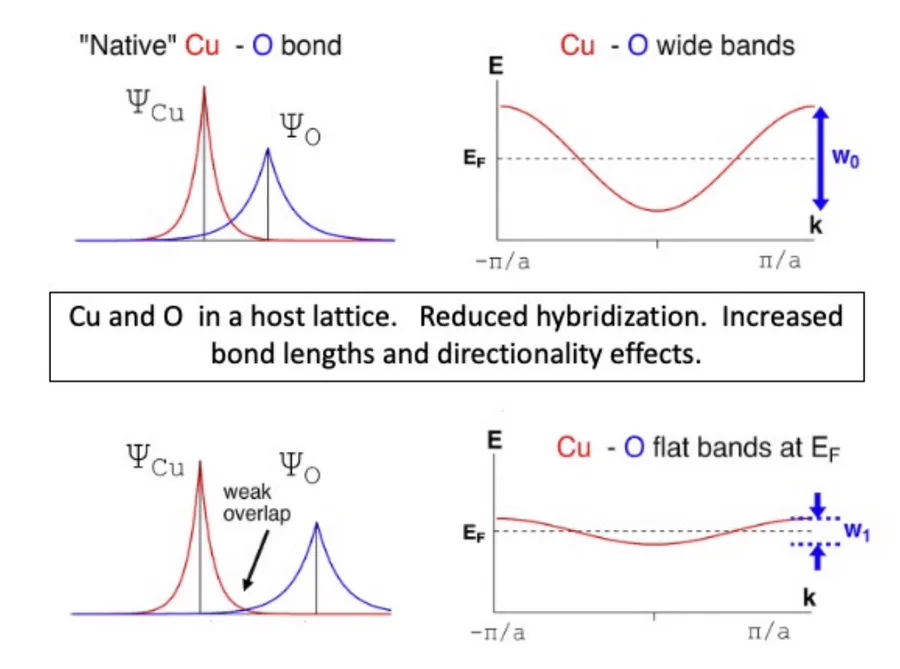
4th Paper - Northwest U and TU Wienhttps://arxiv.org/abs/2308.00676 Liang Si and Karsten Held (h-index: 67) These authors find the same results as the previous two studies - flat energy bands around the fermi surface as a result of copper atoms replacing lead. Two different methods for superconductivity are coupling between electrons, ‘electron-electron’, or coupling between electrons and vibrations in the crystal lattice, ‘electron-phonon’. These authors find that both mechanisms could be possible given the structure that is formed. There is strong agreement with general findings of all the other papers mentioned, however they additionally claim the appearance of diamagnetism without superconductivity is at odds with their results. This would have immense implications for the early attempts at synthesis which show diamagnetism but have not yet yielded electrical measurements of zero resistance.
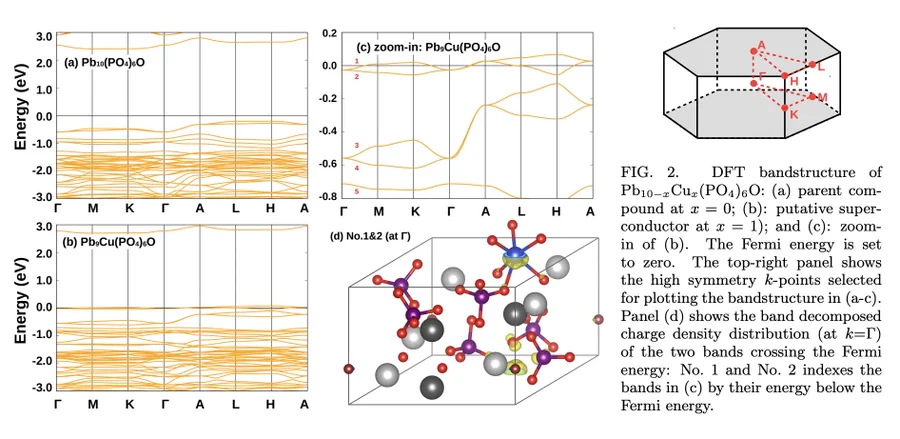
[12:40 PM · Aug 2, 2023](https://twitter.com/Andercot/status/1686688495577018368)
·
93.2K
Views






